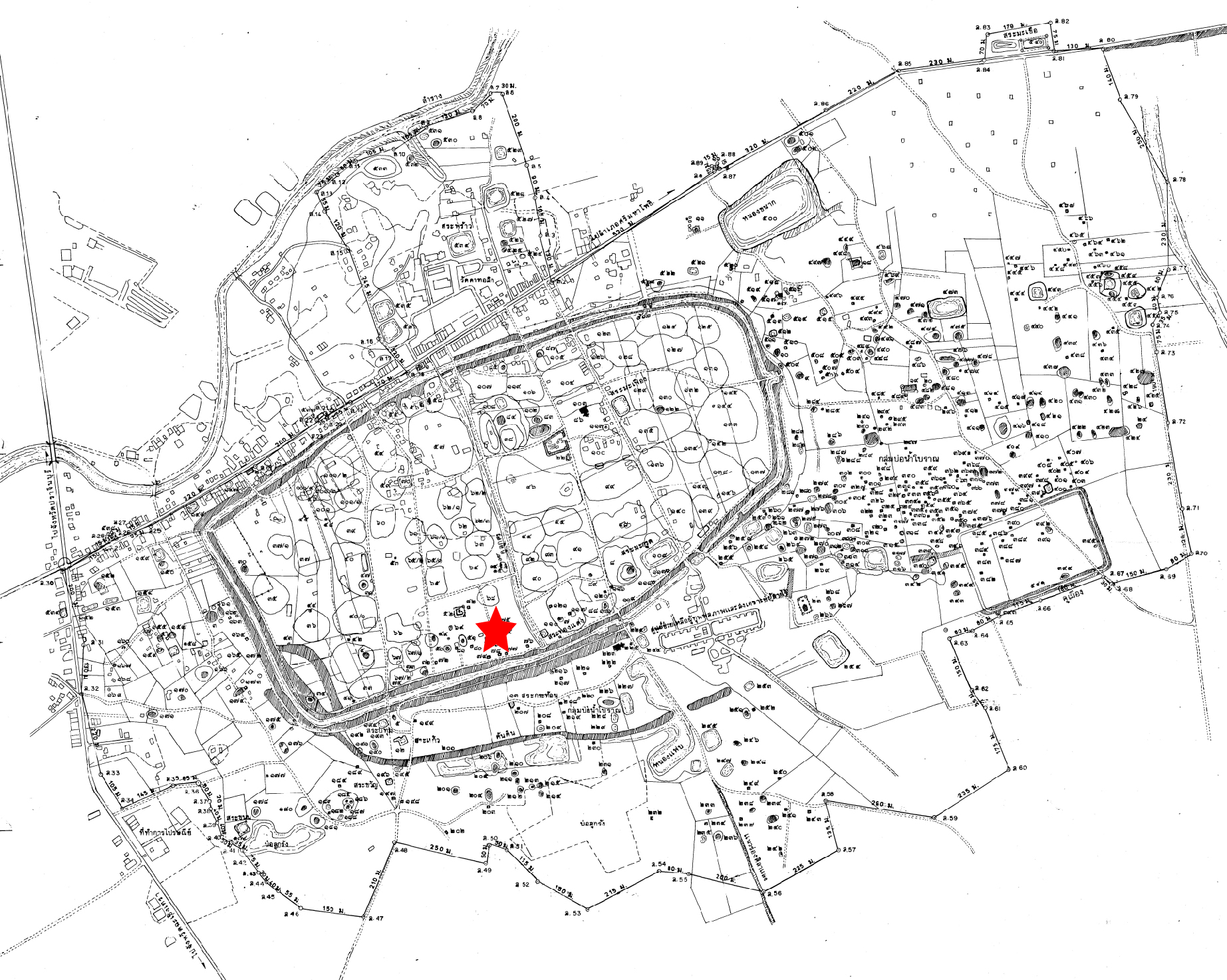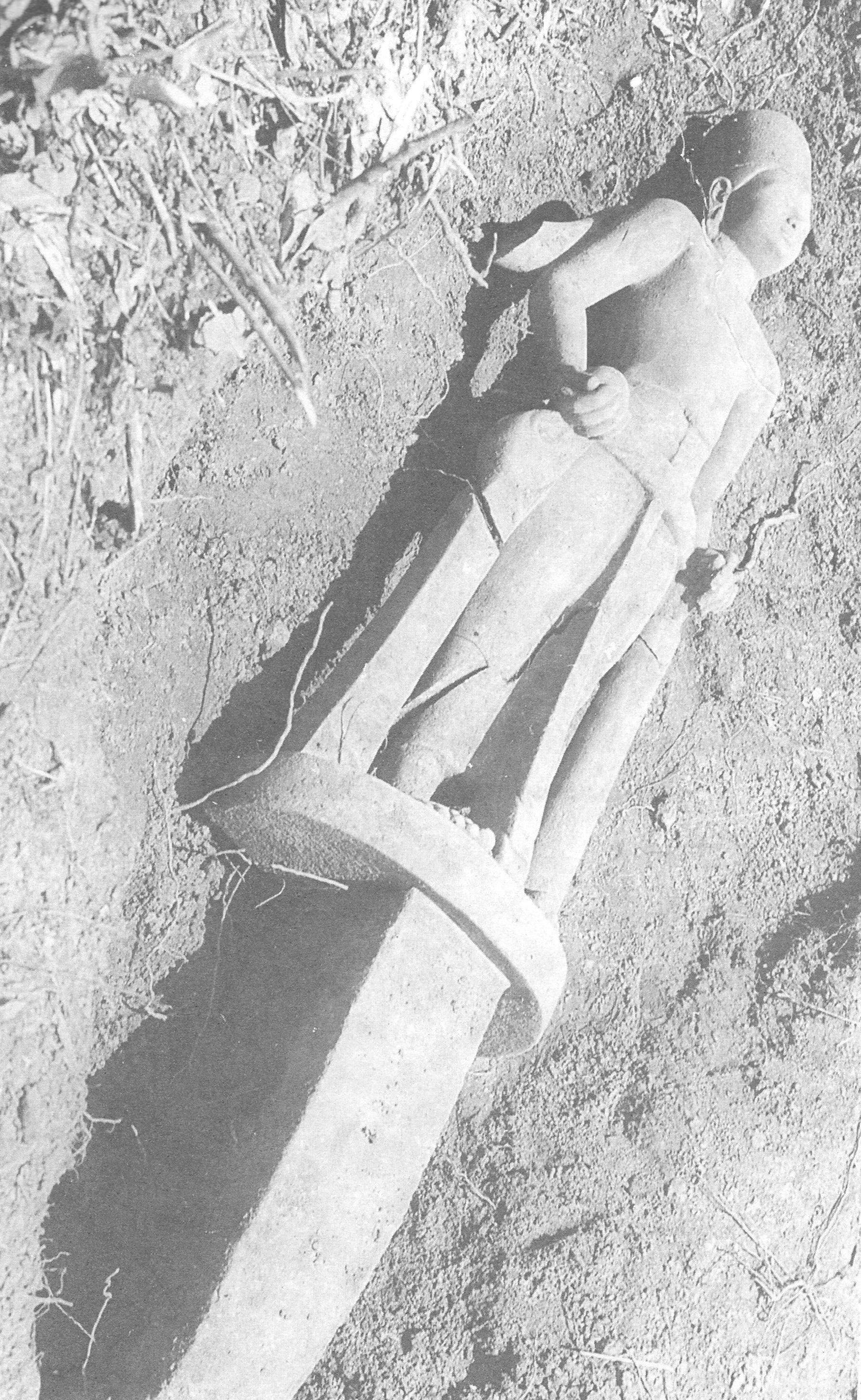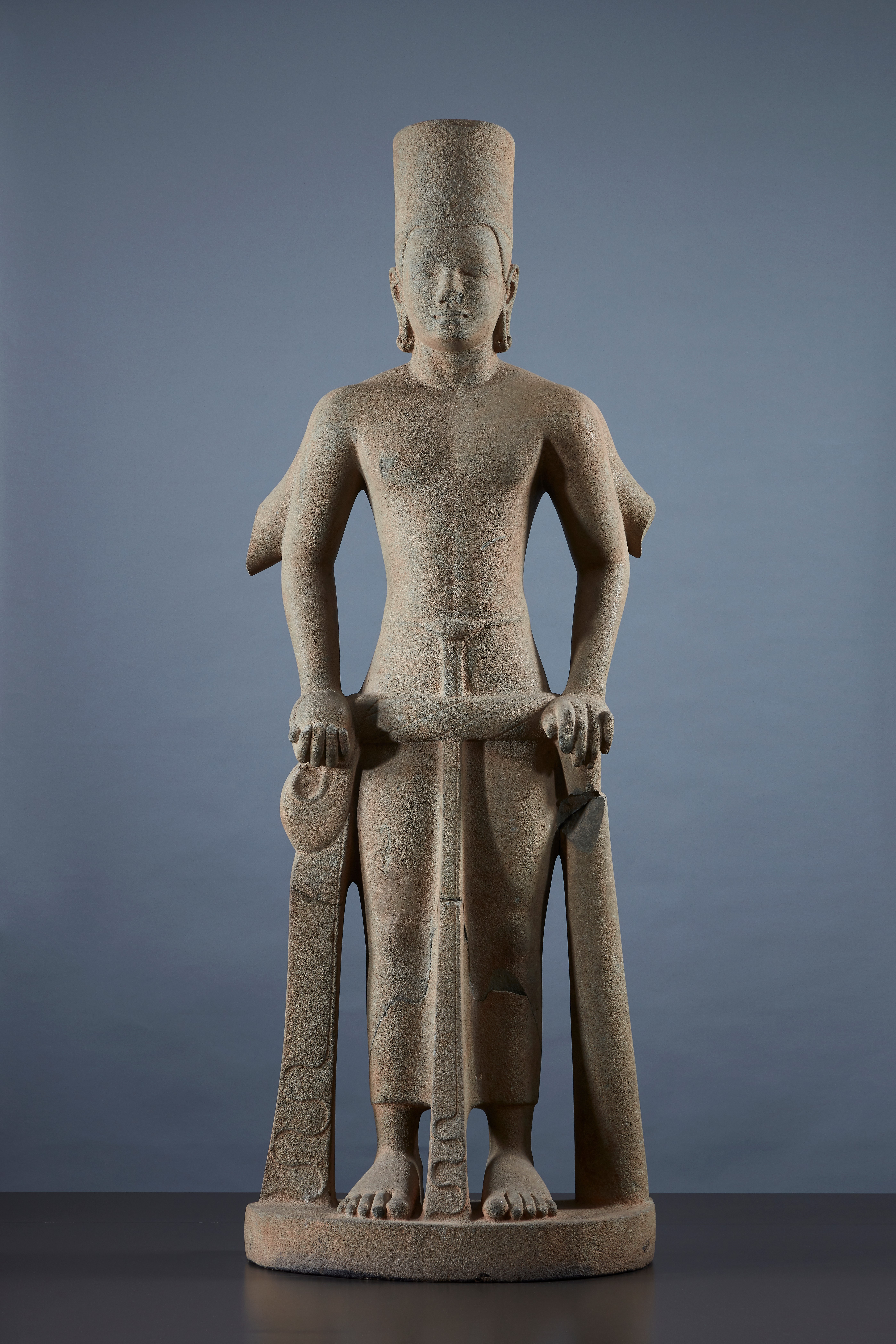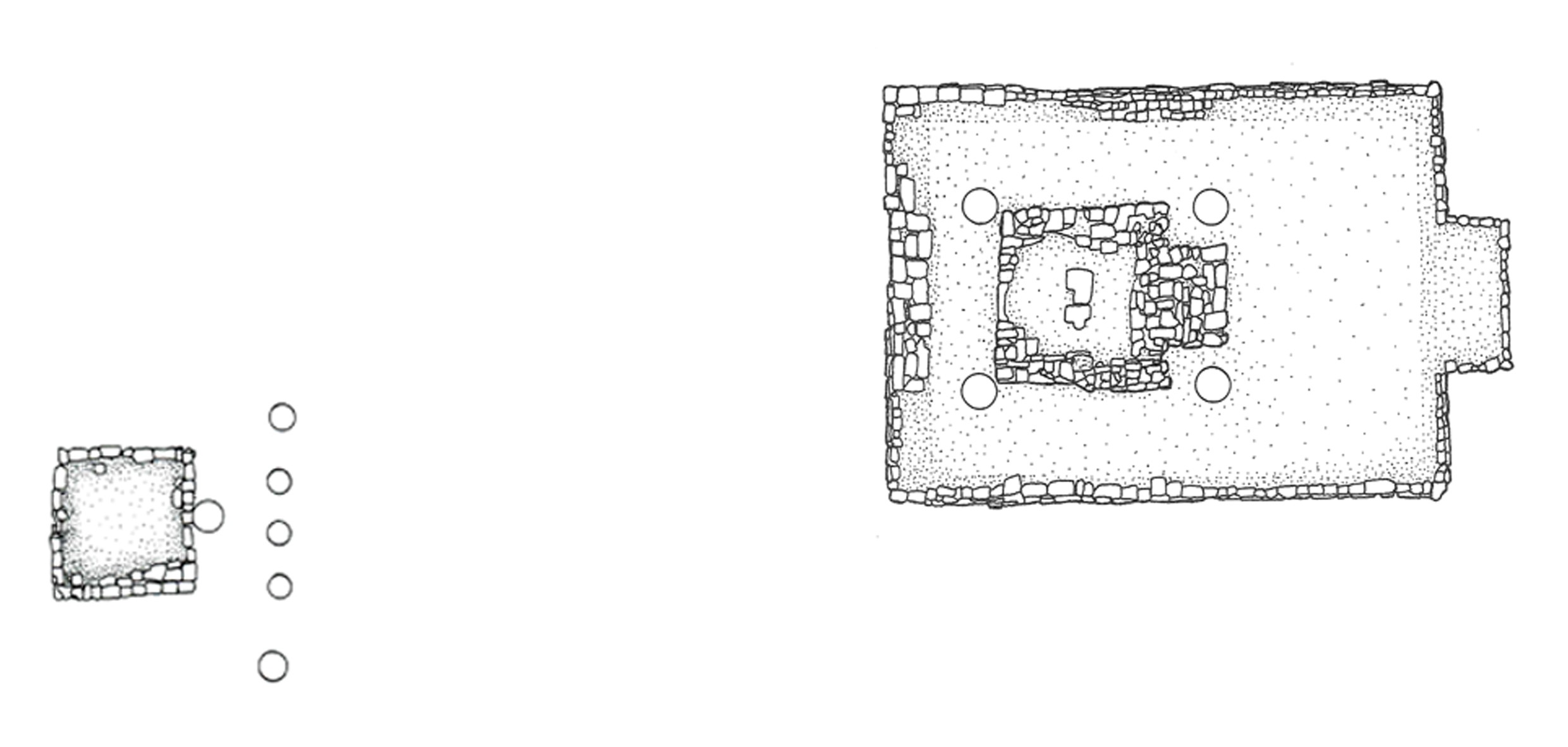The Ruined Vishnu Shrine

The Si Mahosot ancient town’s map shows the location of The Ruined Vishnu Shrine ![]()
In the seventh century CE, the Vishnu shrine (The ruined No.25 and 26) was built 80 metres from the south of the ancient town of Si Mahosot, faces to the linking ditch.
The first consecrated base (The ruined No.25) was erected for the image of Vishnu, the Hindu god of protection, and used as a ‘snanadroni’, to catch the lustral water from the ablution of the god. The standing four-armed deity, found by the archaeological excavation in 1975, holding four symbolic attributes was in the form worshipped for prosperity, worldly happiness, and communal protection (a lump of soil, a mace, a conch shell and a wheel-shaped discus). Therefore, the stone statue was installed facing onto the town. Now this sculpture is on exhibition at Prachin Buri National Museum

Lord Vishnu sculpture found during the archaeological excavation

Lord Vishnu sculpture displays at Prachin Buri National Museum
The second one, a square base behind (The ruined No.26), was a holy seat for priests to perform Vedic sacrifices

Plan of the Vishnu shrine
(left) The Vishnu shrine
(right) A holy seat for priests
According to the Royal Gazette no 52, dated March 16th, 1935, The Fine Arts Department announced that this monument has been listed as the nation’s historic site.


